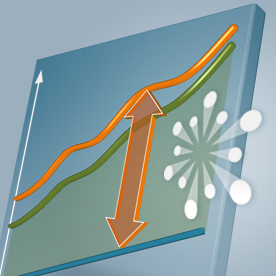Siemens Steers Towards An Industry-Specific Focus
Latest News
September 9, 2013
Siemens PLM Software is now executing on a foundation it’s been building toward for years—releasing a new series of industry-specific solutions, dubbed Catalysts, that aim to take some of the sting out of PLM implementations.
The Industry Catalyst Series will encompass a portfolio of solutions based on a specific industries’ best practices and culled from Siemens’ collective experience collaborating with customers. The idea behind the Catalysts is to help companies jumpstart PLM deployments and accelerate time to value.
 Each Industry Catalyst pulls together three basic components:
Each Industry Catalyst pulls together three basic components:
- A set of industry best practices or digital templates that serve as a reference guide for how companies in a particular industry should operate throughout the various stages of the product lifecycle.
- Deployment accelerators, which are a set of industry-specific recommendations for product selections, system design decisions, configuration procedures, and deployment best practices.
- Open and configurable industry solution components, which are software modules that allow the PLM implementation to easily control the appearance and behavior of the overall platform without the need for custom programming.
By packaging Teamcenter and the rest of its PLM portfolio in this manner, Siemens execs say companies can expect to knock nearly 30% off their initial deployment time while saving millions of dollars in upgrade-related costs over the years, according to Steve Bashada, senior vice president of industries, for Siemens PLM Software. “If it normally takes two to three months before most companies are up and running on PLM with a base of people, we now want them to be up and running pretty quickly—say like six weeks for a large installation and maybe a week or a few days for smaller organizations,” he explains.
Much of what Siemens is trying to do is to productize what is typically done as part of a PLM consulting engagement, reducing what can become the lion’s share of the cost and what is frequently the primary obstacle for deployment, especially for smaller shops considering PLM. And Siemens certainly isn’t alone. PLM vendors have offered vertical industry versions of their platforms for years, but they have typically been more marketing-oriented, packaging up a basic set of templates.
Siemens’ competitors are moving in a similar direction—the most aggressive being Dassault Systemes, which is offering its EXPERIENCE platforms in a number of areas, from automotive and aerospace to its License to Cure EXPERIENCE aimed at medical device manufacturers.
Siemens execs differentiate its approach from Dassault’s, claiming that Catalysts’ is all about the workflow. Central to each Catalyst offering is the concept of Process Pillars, which are a common set of critical processes tuned to a specific industry. For example, the Marine Catalyst spans five business process pillars, including shipbuilding program and product management, fourth generation ship design and engineering, digital ship construction, supply chain management, and ship service. The Catalyst for Electronics and Semiconductors comprises process pillars for parts lifecycle management, bill of materials lifecycle workflow, product maturity progression models, and change management, among others.
Bashada says he expects that the Catalysts will enable customers to implement 70% industry-neutral best practices, 20% industry-specific processes, and 10% customer-specific processes—a recipe Siemens believes is tailored for PLM implementation success. By avoiding a more custom-tailored PLM solution, companies will avoid the traps that inhibit adoption of future technology. “This is a future-proof scenario so companies can move forward and avoid doing customizations that stop the entire operation from moving forward,” he explains.
The Catalysts for Automotive Functional Safety and Electronics and Semiconductors are available now; Catalysts for Shipbuilding and Footwear will follow in December, and Bashada says there will be Catalysts in each of the eight industries Siemens supports with the possibility of 30 to 40 available over time. “That’s the granularity we’re looking at,” he says. “It depends on the industry and what the problems are.”
To hear Steve Bashada explain more about the Siemens Catalysts, watch the video below.
Subscribe to our FREE magazine, FREE email newsletters or both!
Latest News
About the Author
Beth Stackpole is a contributing editor to Digital Engineering. Send e-mail about this article to [email protected].
Follow DE





